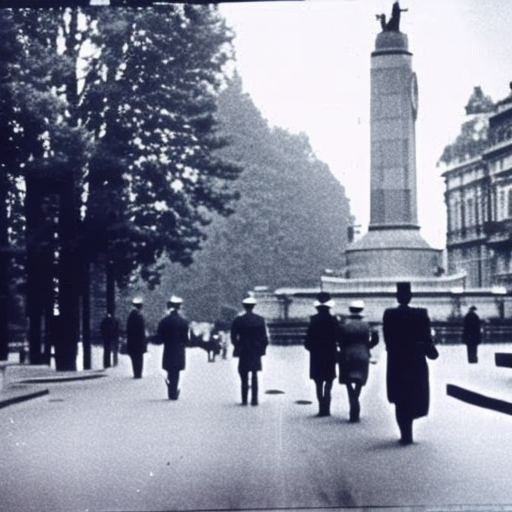Summary:
The European theatre of World War II was a major conflict that took place from 1939 to 1945. It involved many countries and resulted in significant changes to the political landscape of Europe. The war began with Germany’s invasion of Poland and quickly escalated into a global conflict. The European theatre saw intense fighting on land, sea, and air, with major battles and campaigns taking place across the continent. The war ended with the defeat of Nazi Germany and the subsequent division of Europe into East and West.
Causes of the War:
The European theatre of World War II was primarily caused by the aggressive expansionist policies of Nazi Germany under Adolf Hitler. Hitler sought to establish German dominance over Europe and pursued a policy of territorial conquest. The German invasion of Poland in 1939 triggered the war, as Britain and France declared war on Germany in response.
Major Campaigns and Battles:
The European theatre witnessed several major campaigns and battles that shaped the course of the war. The Battle of Britain, fought in the skies over England in 1940, saw the Royal Air Force successfully repel German air attacks, preventing a German invasion. The Battle of Stalingrad, fought between German and Soviet forces from 1942 to 1943, was a turning point in the war, with the Soviet Union emerging victorious and halting the German advance into the east.
Other significant battles included the Battle of Normandy, also known as D-Day, in 1944, where Allied forces launched a massive amphibious invasion of German-occupied France. This marked the beginning of the end for Nazi Germany. The Battle of Berlin in 1945 saw Soviet forces capture the German capital, leading to Hitler’s suicide and the subsequent surrender of Germany.
Impact on Europe:
The European theatre of World War II had a profound impact on the continent. The war resulted in the deaths of millions of people, both military personnel and civilians. Entire cities were destroyed, and infrastructure was severely damaged. The Holocaust, the systematic genocide of six million Jews by the Nazis, was a horrific event that took place during the war.
The war also led to significant political changes in Europe. Germany was divided into East and West, with the eastern part falling under Soviet influence and the western part aligning with the United States and its allies. The division of Europe into two blocs, known as the Iron Curtain, marked the beginning of the Cold War.
Conclusion:
The European theatre of World War II was a devastating conflict that had far-reaching consequences for Europe and the world. It was characterized by intense fighting, major campaigns, and significant political changes. The war resulted in the defeat of Nazi Germany and the division of Europe into East and West. The impact of the war, both in terms of human suffering and political realignment, cannot be overstated.












